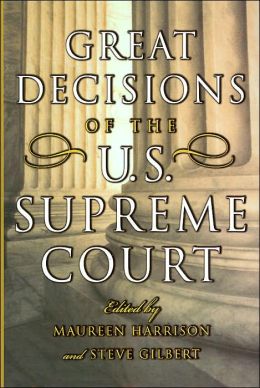I have been reading Great Decisions of The U.S. Supreme Court edited by Maureen Harrison and Steve Gilbert. Thinking about the book is leading me to a new way of understanding the law.
Supreme Court decisions are rather like Euclidean geometry. The Constitution sets forth a set of rules of law that may be considered comparable to Euclid's axioms. Cases are brought to the Supreme Court, and if they are accepted are analogous to hypotheses in Euclidean geometry. The decisions on these cases are then analogous to Euclidean proofs.
The accumulation of case law results in an elaborate tree of decisions, analogous to the structure of proven statements in geometry. The precedents set in previous cases are used by the court in making subsequent decisions in a way analogous to the way formerly proven hypotheses can be used in geometry in proving (or disproving) new hypotheses.
The analogy breaks down in that sometimes the Supreme Court comes to a decision that shows a law that is clearly erroneous is consistent with the Constitution. While treaties between nations have the weight of laws, in Cherokee Nation vs. Georgia, the Supreme Court ruling essentially empowered the government to break many treaties made with Indian tribes. In Dred Scott vs. Sandford the Supreme Court decided that people of African descent were not and could not be citizens. In Plessy vs. Ferguson the Supreme Court ruled that states could legally provide separate facilities for blacks and whites, accepting the dubious proposition that they could do so while assuring equality. Eventually these decisions were reversed, and the branching of decisions based on precedents from these decisions were pruned.
If recent decisions are as nonsensical as they seem (e.g. corporations have the same rights to freedom of expression as people, the voting rights acts of southern states need not be subjected to strict scrutiny) we may hope that some future court will reverse them or the Constitution will be amended and the tree of decisions will again become more reasonable again.
Incidentally, the book is a nice brief account of the decisions in a number of Supreme Court cases that were important in setting precedents for subsequent decades.

No comments:
Post a Comment